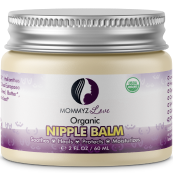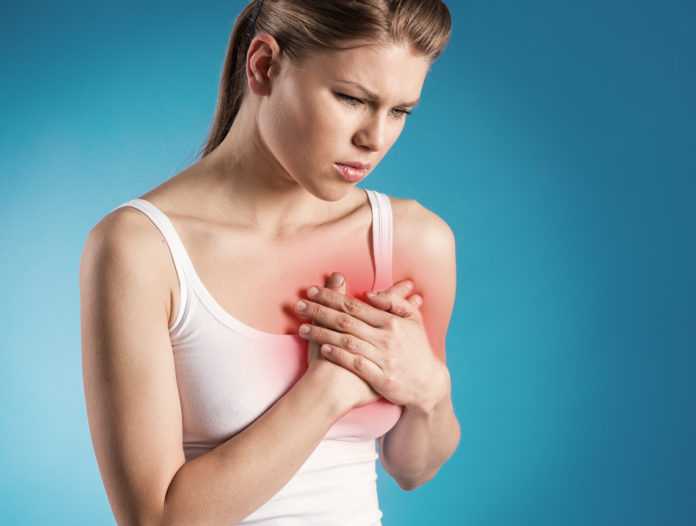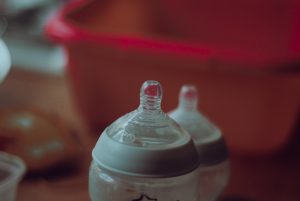Breastfeeding is an all natural biological process that creates a nurturing and loving environment between the mother and the baby. However, if you’re a clueless new mom, not knowing the proper techniques and remedies to common breastfeeding problems might make breastfeeding a painful and agonizing experience for you. Here are the top 5 causes for your breastfeeding pains and remedies for it!
Story Time
The first time I latched Samuel on it was so painful for me, I really had no clue what I was doing. I knew so much about breastfeeding but at the same time, I didn’t know how to get started. It was really disappointing for me and even worse, was the cracking and bleeding that came after from not latching him properly. I realized then how important it is to really educate yourself and make a breastfeeding plan that works for you and your baby.
My determination, preparation and real knowledge of breastfeeding made all the difference in getting the best start with my second breastfeeding journey.
In A Nutshell…
- Breastfeeding should not hurt all. You may feel an initial discomfort at the beginning, but they shouldn’t last for more than a few seconds.
- If breast and nipple pain persists, it may be a sign of a breastfeeding problem
- There are different types of breastfeeding pains that affect either the nipple or breast area. The usual causes are improper latching, not getting to drain out the milk, and poor hygiene while breastfeeding.
- There are many solutions and ways to treat breastfeeding pains. It’s important to get the baby to latch correctly and apply techniques and products for breast pain relief.
- If left untreated, breast infections can grow into more serious cases like mastitis and breast abscess. Seek the help of your health care provider as soon as possible to prevent this from happening.
- Get the breastfeeding help that you need through the different breastfeeding supports available in the USA or through a certified lactation expert.
Recommended for Breastfeeding Pains – Sore Nipple Relief:

Is Breastfeeding Pain Normal?

Many lactation consultants believe that breastfeeding should be a painless activity. Nonetheless, some may still feel a bit of discomfort in the early stages as their breasts prepare for lactation.
Normal Discomfort During Breastfeeding
In addition to your breasts become larger, you may also feel some discomfort during breastfeeding because of the following reasons:
- Your breasts are engorged. It is normal for your boobs to feel heavy and uncomfortable 2 to 3 days after giving birth. This is your breast milk building up in quantity in preparation of nursing your baby. Engorgement is normal around 3-5 days postpartum, but should eventually subside a day or two later.
- Your nipples need to toughen up. Your soft nipple tissues need to get used to you nursing your baby. So in the first few latches, it will be normal to feel a bit of pain and discomfort as your baby tries to pull your nipples into their mouth. This should only last for about 30 to 45 minutes after latching.
- The let-down reflex. To initiate breastfeeding, your let-down reflex needs to be activated. This can be easily triggered by the first few suctions when nursing your baby. For some moms, you may typically feel a tingling pain in the upper breast area when the let-down reflex is prompted. This should normally go away as you progress with breastfeeding.
5 Most Common Breastfeeding Pains
Anything persisting pain during breastfeeding can signal that there might be something wrong. This will eventually result in nipple damage and lower breast milk supply. It’s best to be wary of the common breastfeeding issues many women face so that you can find out what’s causing it and know how to best remedy it.
Sore or Cracked Nipples
Symptom
- Nipples are painful
- Breastfeeding hurts and becomes uncomfortable
- Your nipples may look deformed when your baby unlatches
- The skin in the nipple might crack and get blisters
- Your baby is easily irritable and isn’t gaining weight
- The baby bites or nibbles down on the nipple
Cause
Improper latching is one of the most common causes of why your nipples get sore and cracked. A good latch means that the nipple goes all the way down the baby’s mouth. Thus, the tongue will do all the work to suck the milk out. However, for some babies, the nipple might not go far back enough. So instead, the tongue presses and rubs the nipples causing it to be painful.
Usually, babies that alternate between breastfeeding and bottle feeding may have poor and shallow latching.
Solution
Work on latching your baby right. Doing small adjustments in the position can already make a great difference for you and your baby’s comfort. Here are some tips:
- Support the baby’s weight with your arm and your hands between their shoulder blades
- Tuck your baby close to your elbow so his head can fall back a little
- Hold the nipple so that it tilts up and a bit, with your fingers under the breast for support
- Line up the baby’s nose with your nipple so the mouth is lined up with the underside of your breast
- Pull the baby close when they open their mouth wide (like when they’re yawning) while pushing the breast through the heel of your hand.
- Make sure that the chin is buried in the breast and his nose far away so that the nipple can be protected. Use a breast shell in between nursing sessions.
- Lubricate the nipples before expressing milk
- Ensure that nipples are dry after feeding
- Soothe, heal, protect, and moisturize your nipples with an organic nipple balm
2. Yeast Infection (Thrush)
Symptom
- Nipples feel sore, especially during and in between feedings
- Sharp burning pain in the nipples
- Nipples develop a pink or red rash
- The skin around the nipple may look smooth and shiny
- Baby starts having white dots and circles on the inside of his lips, cheeks, and roof of his mouth
- Baby becomes fussy
Cause
It’s normal to have yeast in our bodies, but sometimes it overgrows and becomes a problem. This can happen due after antibiotic treatments or if the mother is anemic.
Solution
It’s best to consult your doctor so you can be diagnosed correctly. They will provide you with a set of prescription medicines or recommend over-the-counter anti-fungal products. Treat this problem as early as possible as both the mother and baby need to be treated, even if only one has a yeast infection.
Avoid getting a yeast infection by allowing proper ventilation in your breast area. Don’t wear tight brassieres that can constrict your breast. You can also try using breast shells to ease ventilation.
3. Plugged Duct

Symptom
- Breast is sore and tender
- You might feel a lump under the skin
- The skin around the breast may look red
- Feel a hot sensation or swelling around the breast
Cause
Blocked ducts can happen if your breast doesn’t get emptied regularly. This is due to either a poor latch, pressure from a tight nursing bra causing your ducts to be compressed and damaged, being stressed, or a sickness that may make you nurse less frequently (like a cold).
Solution
Remember to moist heat, rest, massage, and empty your breast. This eases milk ejection so you’re able to empty your supply properly. The more you are able to breastfeed the better. After unclogging the ducts, you might still feel a bit of redness or tenderness a week prior. Here are a few techniques you can do to treat a plugged duct:
- Start nursing the sore or clogged duct first. Your baby sucks strongest during the beginning of breastfeeding. You can also use a breast pump or hand expressions to help you empty the milk out.
- Massaging. Lactation experts recommend breastfeeding moms to regularly do gentle pressures and massages starting from the outside moving towards the nipple area.
- Warm up your breast. Applying a warm compress or gel nursing pads can help open the ducts and relieve the swelling and pain.
- Rest well. Baby care may take a whole lot of time but it’s also important to give yourself some ample rest.
4. Mastitis
Symptom
- Breast feel warm
- Tenderness and redness around the breast area
- Feeling feverish and fatigued
- Develops after an unresolved plugged duct
Cause
Mastitis is an inflammation of the breast as a result of poor milk ejection or infection in the breast. If you are unable to fix a blocked duct, bacteria can start to build up and grow in the breast milk. This can also eventually develop following an unresolved cracked nipple or untreated yeast infection.
Solution
The first treatment would be similar to a clogged duct. If the condition hasn’t improved within a day and is getting worse after some time, it’s best to seek help from your health care provider. They will prescribe antibiotics to be taken for 10 to 14 days.
Continue breastfeeding, even on the affected breast, to clear off the infection. You can also use pumps or express with your hands.
5. Breast Abscess
Symptom
- Similar symptoms to mastitis
- Pus may drain out of a lump
Cause
In usually rare instances, untreated mastitis can lead to a breast abscess. The infection can eventually lead to a more severe form which is why pus and lumps start to form.
Solution
It’s imperative to get an immediate consultation with your doctor. Sometimes the boils can break off by itself and the pus drains out. Although some cases need special surgical drainage. You can only breastfeed again once your doctors have given you a clearance.
Need Help With Breastfeeding?
There are various lactation experts and consultants available in hospitals, breastfeeding clinics, public and community health centers, as well as private practices. Here are some places you can contact in the USA if you need help with your breastfeeding:
- La Leche League USA Breastfeeding Helpline – 1-877-4-LA LECHE (1-877-452-5324)
- Breastfeeding USA – Find a Breastfeeding Counselor
- National Office on Women’s Health Helpline – 800-994-9662 (TDD 888-220-5446) – the US Office on Women’s Health staffs both English and Spanish speaking peer counselors
You can also ask the help of a certified lactation expert. They usually have IBCLC or International Board of Certified Lactation Consultants at the end of their names. Make sure you are also consulting with a verified lactation consultant through their website.
In Summary
Truth is: breastfeeding shouldn’t hurt at all. There may be some initial discomfort felt during the first few sessions of nursing your baby, but this should only happen after a few seconds. If the breast and nipple pain persists for a longer time, this might be a sign that there is a problem.
The most common breastfeeding pains are sore or cracked nipples, thrush or yeast infection, plugged ducts, and even more severe cases like mastitis or breast abscesses. The causes of these breastfeeding pains are usually due to improper latching, lack of hygiene, and not getting to completely empty out the breast milk.
If left untreated, they eventually lead to infections which can even more painful and affect your breastfeeding habits. It’s best to provide early relief and care once breast and nipple pains are experienced and consult as soon as an infection happens. You may also get some help from lactation consultants who are available all around the USA.






